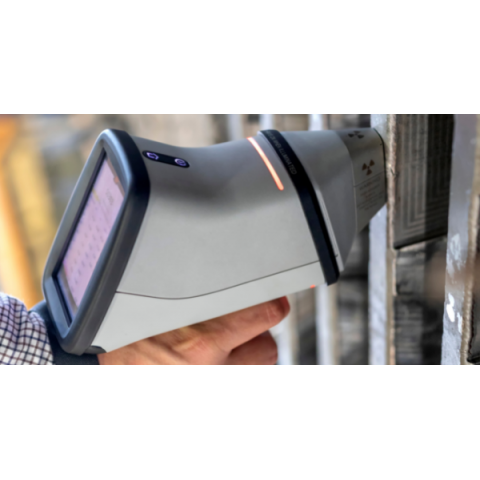Testing for The Safe Operation of XRF Devices
In recent years, the advance of XRF technology has enabled it to become affordable and practical for mainstream use in many industries.
XRF is an acronym for X-ray fluorescence spectroscopy. XRF is a non-destructive analytical technique used to determine the elemental composition of materials. Handheld XRF analysers work by measuring the fluorescent (or secondary) X-rays emitted from a sample when excited by a primary X-ray source. Each of the elements present in a sample produces a set of characteristic fluorescent X-rays, or “unique fingerprints”. These “fingerprints” are distinct for each element, making handheld XRF analysis is an excellent tool for quantitative and qualitative measurements.
- X-rays are produced by the analyzer and pointed at a sample surface.
- The energy causes inner-shell electrons to be ejected.
- Outer-shell electrons fill the vacancies left by the ejected electrons and fluorescent x-rays are emitted.
- The fluorescent x-rays enter the detector and send electronic pulses to the preamp.
- The preamp amplifies the signals and sends them to the Digital Signal Processor (DSP).
- The DSP collects and digitizes the x-ray events and sends the spectral data to the main CPU for processing.
- The CPU analyzes the spectral data to produce detailed composition analysis.
- Composition data and other grade or value identification are displayed and stored in memory for later recall.
An XRF tool has a source of x-ray radiation to allow the process to work. Typically, the energy required is low at around 20KeV. The device has a focused beam of energy that is emitted for a brief period to allow the measurement to take place. A shutter is closed and opens only long enough to take the sample. The unit is also designed in such a way that the X-ray radiation is shielded. This prevents the X-ray radiation from leaking out of any part of the instrument accept where it is controlled by the shutter.
To confirm safe operation of XRF units, it is required that regular testing should be carried out to confirm that there is no stray x-ray energy emitted from the device when the measurement is not being taken or from any part, but the shutter protected outlet.
ADM Nuclear Technologies stocks the Thermo Scientific RadEye G20-10 Gamma survey Meter for this purpose.
The RadEye G20-10 will detect X-Rays from 17 keV up making it suitable for use as a personal X-Ray monitor for staff continually working close to XRF machines.
The simple and intuitive interface makes it remarkable easy to use. The G20-10 gives true dose calculation and there is an alarm for when the dose rates exceed a predetermined level.
These lightweight, compact Geiger counters are ideal for ambient equivalent dose and dose rate measurement, with a flat energy response curve from 17keV to 1.3MeV according to ambient equivalent dose H*(10). The RadEye G20-ER10 model covers the whole dose rate range from background to 100 mSv/h.
Using 2 x standard AAA batteries will give you up to 600 hours of operation. Rechargeable batteries can also be used for added economy.
The RadEye G20-10 is widely used throughout the food manufactory and processing industry in Australia. This is due to the use of X-Ray based contamination detection and quality control inspection equipment. Its sensitivity from low levels of energy to elevated levels makes it the go to device for testing XRF technology.

Naturally, technicians working on X-Ray systems want to be 100% certain that the machine they have just serviced is functioning correctly, as well as being able to monitor their own exposure to X-Rays whilst carrying out work on the equipment.
The Thermo Scientific RadEye G20-10 is fast becoming the standard for service engineers working on low energy X-Ray equipment.
Customers looking for an X-ray and Gamma Survey Meter are encouraged to contact ADM Nuclear Technologies for assistance in selecting a suitable instrument. One of our product experts will ensure that the X-Ray monitor selected can take measurements within the rated power range of the X-Ray equipment in question.
IS THIS INFORMATION USEFUL?
If so, why not share it with your peers and colleagues. Simply click on the blue LinkedIn share icon below.

